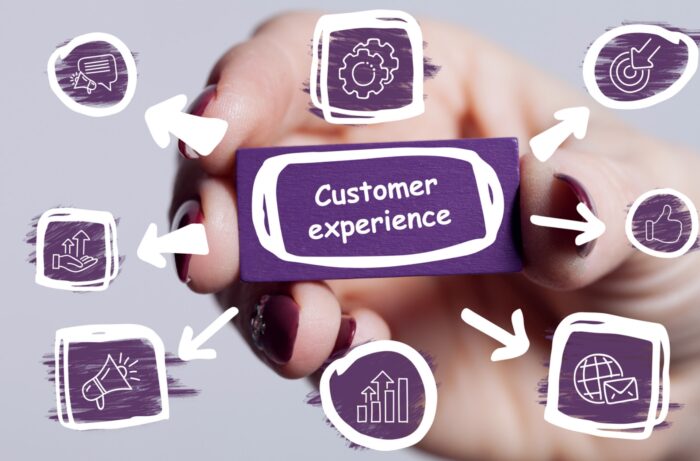
Engaging your customers is essential for any business to thrive in today’s fast-paced digital landscape. And what better tool to do that than social media? With billions of active users, they have become the go-to platforms for businesses looking to build brand awareness and drive customer engagement.
But with so many options and strategies available, it can be overwhelming trying to determine the best approach. That’s why we’ve compiled this guide on how to effectively leverage social media marketing to enhance your customer engagement efforts.

Encouraging User-Generated Content and User Interaction
One of the most effective digital marketing strategies to drive customer engagement on social media is by encouraging user-generated content and fostering user interaction. User-generated content refers to any form of content created by your customers, such as reviews, testimonials, or creative posts featuring your products or services.
By actively encouraging your customers to share their experiences, you create a sense of community and authenticity around your brand. This not only boosts customer engagement but also builds trust and credibility.
To encourage user-generated content, you can run contests or giveaways where participants are required to create and share content related to your brand. For example, a clothing company might ask customers to post pictures of themselves wearing their favorite outfit from the brand.
You can create interactive posts that prompt customers to share their opinions, experiences, or ideas. By responding promptly and genuinely to user-generated content and fostering a dialogue with your customers, you create a sense of inclusivity and strengthen customer relationships.
Crafting Engaging and Relevant Content
Your content should captivate and resonate with your followers, compelling them to like, comment, and share. Start by understanding your target audience’s preferences, interests, and pain points. This will help you create content that is tailored to their needs and desires.
Focus on storytelling. Use compelling narratives, vivid imagery, and relatable experiences to grab your audience’s attention. Additionally, leverage the power of video content, as it is proven to be highly engaging on social media platforms. Experiment with different formats, such as tutorials, behind-the-scenes footage, or interviews, to keep your content fresh and exciting.

Implementing Effective Advertising Strategies
While organic reach on social media can be limited, utilizing paid advertising strategies can significantly enhance your customer engagement efforts. Platforms offer powerful advertising tools that allow you to target specific demographics, interests, and behaviors, ensuring your content reaches the right people.
When implementing advertising strategies, it is crucial to have a clear objective in mind. Whether it’s driving traffic to your website, generating leads, or increasing sales, tailor your ad campaigns accordingly.
Use compelling visuals, concise copy, and strong calls to action to grab attention and entice users to engage with your content. Regularly analyze the performance of your ads, make adjustments as needed, and leverage A/B testing to optimize your campaigns further.
Understanding Your Target Audience
Start by leveraging social media analytics tools to gather insights about your audience’s demographics, including age, gender, location, and interests. Pay attention to engagement metrics, such as likes, comments, shares, and click-through rates, to understand what type of content resonates most with your audience.
Additionally, engage in social listening by monitoring conversations around your brand and industry. This will provide valuable insights into your audience’s opinions, preferences, and pain points, enabling you to tailor your content and engagement strategies accordingly.

Analyzing Social Media Metrics and Data
Data is the lifeblood of effective social media marketing. By analyzing metrics and data, you can gain valuable insights into the performance of your campaigns, identify trends, and make data-driven decisions to enhance customer engagement. Key metrics to track include reach, engagement rate, click-through rate, conversion rate, and customer acquisition cost.
Regularly review your analytics to identify patterns and trends. Look for posts or campaigns that have garnered high levels of engagement and understand what made them successful.
Likewise, analyze underperforming content to identify areas for improvement. Consider using social media management tools that provide comprehensive analytics and reporting capabilities to streamline the process.
Leveraging Influencer Marketing to Drive Engagement
Influencer marketing has become a powerful tool for driving customer engagement on social media. Influencers are individuals with a significant following and influence in a specific niche or industry. Collaborating with influencers allows you to tap into their engaged audience and leverage their credibility to drive customer engagement.
When selecting influencers to partner with, it is essential to choose those whose values align with your brand. Look for influencers whose audience overlaps with your target market, as this ensures your content will resonate with their followers. Collaborate with influencers to create authentic and engaging content that showcases your products or services in a genuine way.
Encourage the influencer and their followers to actively engage with the content by posing questions, sharing personal experiences, or offering exclusive discounts or giveaways.

Utilizing Social Media Platforms Effectively
Different platforms cater to different demographics and content formats. Understanding the strengths and nuances of each platform will help you tailor your content and engagement strategies accordingly.
For instance, Instagram is highly visual and focuses on lifestyle content, making it ideal for brands that rely on imagery and aesthetics. Twitter, on the other hand, emphasizes concise and timely updates, making it suitable for real-time engagement and customer service.
LinkedIn is a professional networking platform, making it ideal for B2B companies or targeting a professional audience.
Building a Strong Brand Presence
Your brand should have a consistent voice, tone, and visual identity across all social media platforms. This consistency creates a sense of familiarity and builds trust with your audience.
Craft a compelling brand story that resonates with your target audience and consistently communicate it through your content. Use a consistent brand voice that aligns with your brand values and appeals to your audience’s emotions.
Maintain a cohesive visual identity by using consistent colors, fonts, and imagery across all your social media profiles. By building a strong brand presence, you create a loyal following that actively engages with your content.

Continuous Adaptation and Improvement of Social Media Strategies
Social media platforms and trends are constantly evolving. To drive customer engagement effectively, you must continuously adapt and improve your social media strategies. Stay up to date with the latest trends and changes in algorithms to ensure your content remains relevant and visible.
Regularly analyze your metrics to identify areas for improvement. Experiment with different content formats, posting schedules, and engagement strategies to see what resonates best with your audience. Stay proactive and agile, embracing new features and tools offered by social media platforms to stay ahead of the competition.
Monitoring and Responding to Customer Feedback
Customer feedback is invaluable for driving customer engagement and building strong customer relationships. Social media provides a platform for customers to share their opinions, experiences, and concerns. Actively monitor and respond to customer feedback to show that you value their input and are committed to their satisfaction.
Respond promptly and sincerely to both positive and negative feedback. Express gratitude for positive reviews and address negative feedback with empathy and a willingness to resolve any issues. By engaging with your customers and providing excellent customer service, you create a positive perception of your brand and foster loyalty and engagement.

To wrap things up
It is clear that social media marketing can be a powerful tool for driving customer engagement Through an effective combination of content curation, original posts, influencer outreach, and strategic targeting tactics, businesses of all sizes can harness the power of social media to increase their brand visibility and boost customer engagement.











